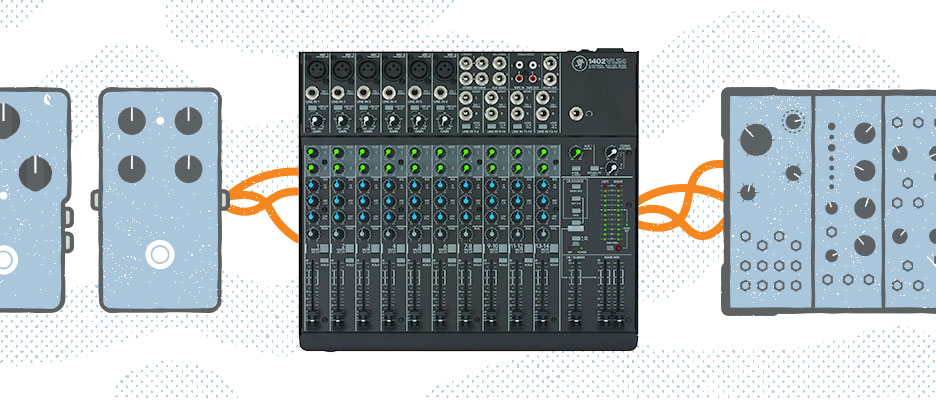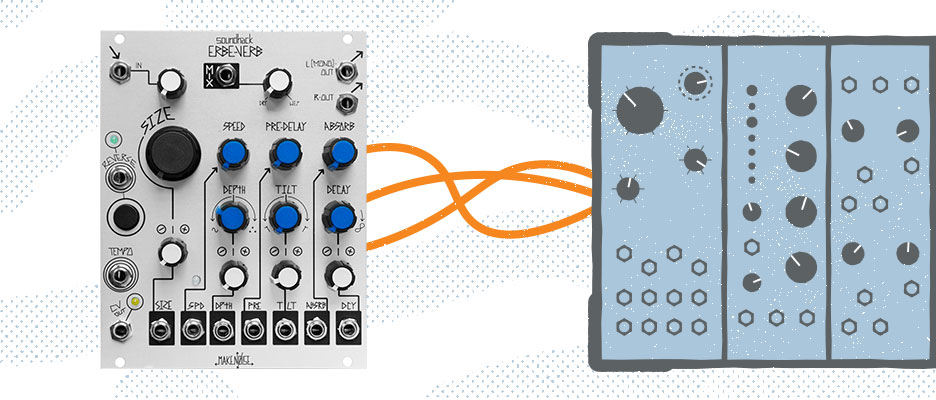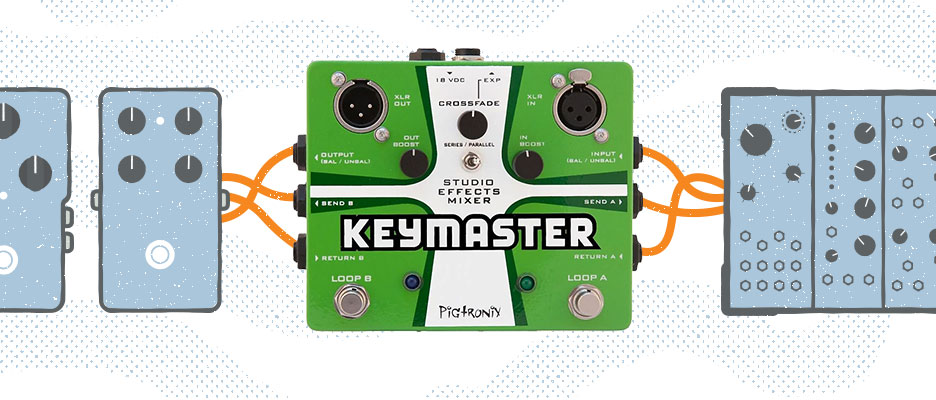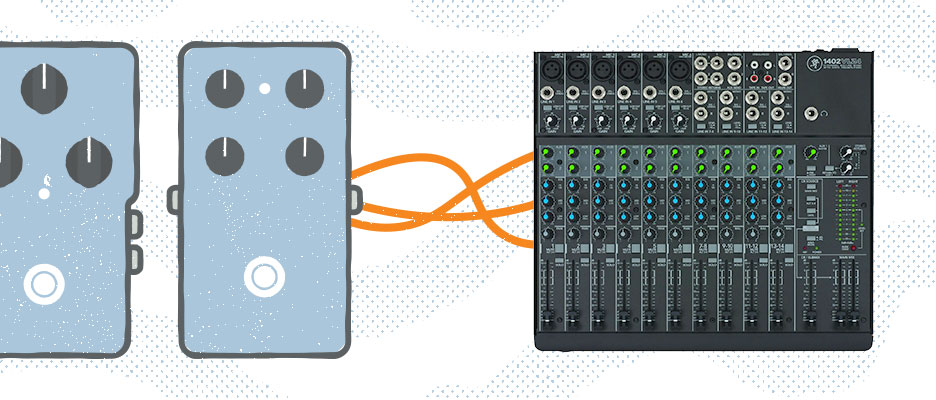While using effects pedals with your Eurorack synthesizers can help expand your sonic palette, they can also introduce unwanted noise. When you feed a modular unit into a series of pedals, you might get a warm hum or harsh buzz as a result of the difference between the output impedance of the synths and the input impedance level the pedal is designed to take.
“Modular level” (the signal coming from your synths) is higher than that of “line level” (the level coming from a mixer or other audio source), which is, in turn, higher than “instrument level” (the passive signals put out by most guitars and basses).
Vintage effects units from both Boss, Ibanez, and the larger pedal manufacturers can usually handle line-level output from the most common standalone synthesizers on the market today, though this comes with a gentle tone suck from the synth.
Some pedal manufacturers—like Eventide, Strymon, and a few boutique brands—have come up with ways to better compensate for different input levels. For example, the main line of Eventide pedals include switches for Guitar (instrument) and Line inputs. These allow a user to adjust the amount of gain and impedance appropriate for their choice of instrument.
With pedals like the Eventide Space, if you were to run a synth’s output into the Guitar input, you’d cover your synth with a hot, distorted sound—like a lollipop doused in beach sand. Flip that switch from Guitar to Line level, and you’ll have clean, lush reverbs for days.
Meanwhile, effects from Strymon and TC Electronic auto-sense this difference in signal. Similar efforts are seen within the whacked, spatial realm of EarthQuaker Devices, whose pedals can turn a fiery modular output into something a little tamer, but they will still leave a vital flare.
However, if you’d like to avoid the trouble of going straight in and risking distortion, we’ve got some solutions for you. Over the course of a few months, I took the time to explore a few different methods of incorporating effects processors with my hodge-podge of modular synths. Keep reading below for different ways to integrate pedals with your own synth collection.

The number one (and, perhaps, the cheapest) solution is to run your pedals through the mixer’s built-in effects loop. I found a Mackie 1402-VLZ3 14-channel mixer locally for under $100. The mixer came equipped with two stereo effects sends, which meant I could run any two effects chains or single effects and blend with the instrument to taste.
Best of all, I could apply different amounts of the effect to the various inputs. While other synths could be doused in a lot of reverb, my drum machines could be treated with very little. This creates a wide range of dynamic structure, so much so that this is the preferred method of professional modular synthesists like Richard Devine, M. Geddes Gengras, and Tom Hall of Cycling ’74, the famous Max/MSP developer.
“I use a ProCo Rat pedal on an FX send on my outboard Soundcraft mixer—I've used this pedal for well over a decade now, absolutely love it,” Hall says.

In a poll setup within the “Eurorack Synthesizers” Facebook group, I found other solutions to pedal integration, many of which involved a specific set of modules dedicated to effects-loop re-amping within the modular setup.
Malekko Heavy Industry’s SND/RTN and ALM/Busy Circuits S.B.G. modules appeared quite often for the use of single guitar pedals.
With what little experience I’ve had, these work, but in the same mono-in, mono-out simplicity the pedal realm is so familiar with, which is still quite easy to overdrive and distort. While they take the low level of the effects and amplify its signal to match that of a modular, you still run the risk of overloading the pedal on the front-end.

Perhaps if you have the dough or the space in your case, effects bound to the modular level are abundant from a plethora of manufacturers, most of which are subject to voltage control, which opens all kinds of creative doors that aren’t quite possible in the stompbox realm.
Coded by Tom Erbe of SoundHack, the Make Noise Erbe-Verb takes the classic reverb effect to new heights with voltage control over all parameters, allowing you to compose dense sound structures.
Same goes for one of the most popular modules in the Eurorack realm—the Mutable Instruments Clouds. For its granular sampling, lush reverbs, and pitch-shifting in full stereo immersion, Clouds has become that one end-of-chain nearly every modular freak, myself included, has grown to love—so much so that it easily becomes a crutch in the rack.
But if you need something simple, the Erica Synths Pico DSP provides eight algorithms to complement any sound and will take up only 3HP of your case.

Not everyone can dedicate an entire 4HP to 10HP of their Eurorack case to effects. That’s why things like the Pigtronix Keymaster, a re-amping box has won over Noise Jockey wizard Nathan Moody.
“I always opt for the option that lets me be creative and immediate, and not worry about impedance or specific issues between individual units. Gimme the weird FX on whatever I want it on, and now,” Moody says.
These extend beyond the realm of modular, to vocals and mic’d instruments alike, so if you’re working with more than just one, this may be your best bet.

Austin Cairns, popularly known as r beny takes a different approach.
“I just played a show and put an El Capistan after my mixer, being fed into the Analog Heat. So either way, the hot modular signal is being attenuated down before entering the pedals—clean signal.”
